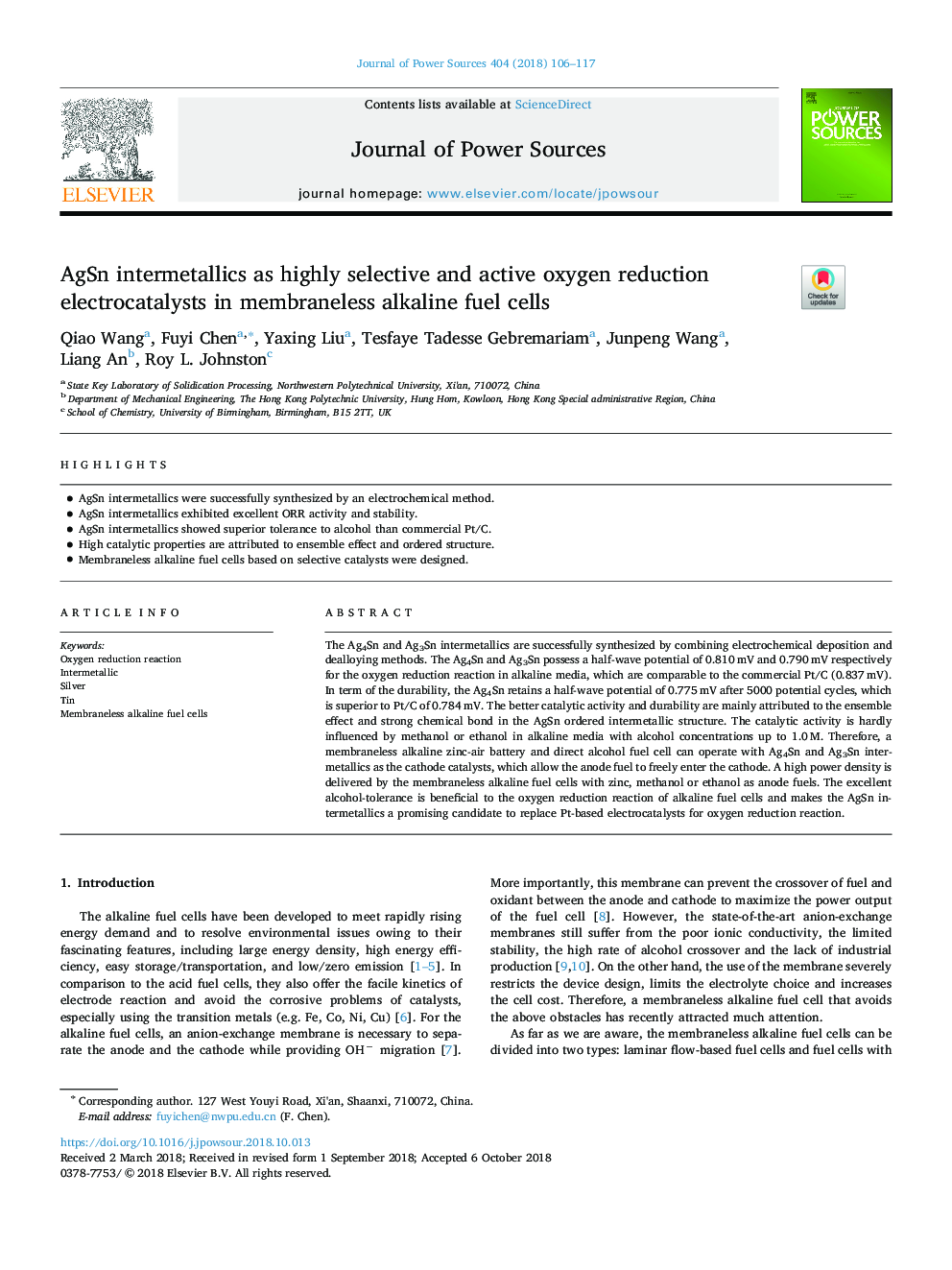| Article ID | Journal | Published Year | Pages | File Type |
|---|---|---|---|---|
| 11020219 | Journal of Power Sources | 2018 | 12 Pages |
Abstract
The Ag4Sn and Ag3Sn intermetallics are successfully synthesized by combining electrochemical deposition and dealloying methods. The Ag4Sn and Ag3Sn possess a half-wave potential of 0.810â¯mV and 0.790â¯mV respectively for the oxygen reduction reaction in alkaline media, which are comparable to the commercial Pt/C (0.837â¯mV). In term of the durability, the Ag4Sn retains a half-wave potential of 0.775â¯mV after 5000 potential cycles, which is superior to Pt/C of 0.784â¯mV. The better catalytic activity and durability are mainly attributed to the ensemble effect and strong chemical bond in the AgSn ordered intermetallic structure. The catalytic activity is hardly influenced by methanol or ethanol in alkaline media with alcohol concentrations up to 1.0â¯M. Therefore, a membraneless alkaline zinc-air battery and direct alcohol fuel cell can operate with Ag4Sn and Ag3Sn intermetallics as the cathode catalysts, which allow the anode fuel to freely enter the cathode. A high power density is delivered by the membraneless alkaline fuel cells with zinc, methanol or ethanol as anode fuels. The excellent alcohol-tolerance is beneficial to the oxygen reduction reaction of alkaline fuel cells and makes the AgSn intermetallics a promising candidate to replace Pt-based electrocatalysts for oxygen reduction reaction.
Related Topics
Physical Sciences and Engineering
Chemistry
Electrochemistry
Authors
Qiao Wang, Fuyi Chen, Yaxing Liu, Tesfaye Tadesse Gebremariam, Junpeng Wang, Liang An, Roy L. Johnston,
